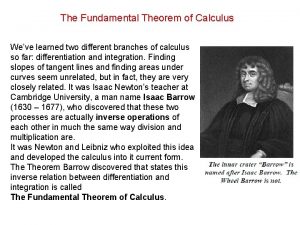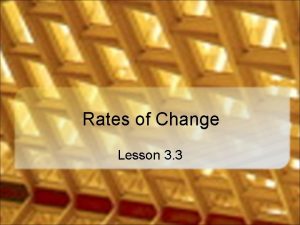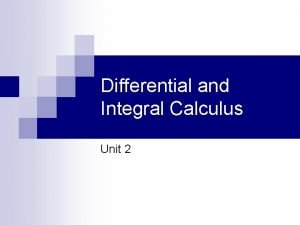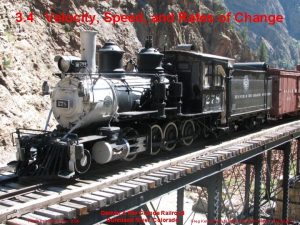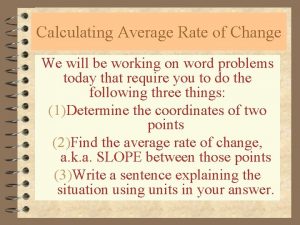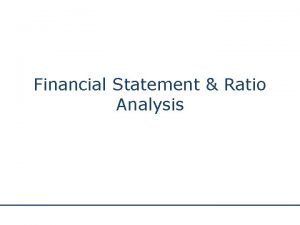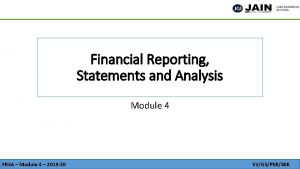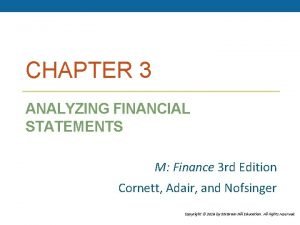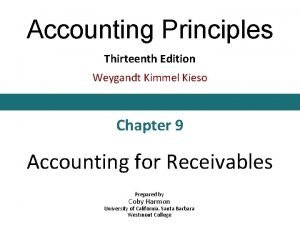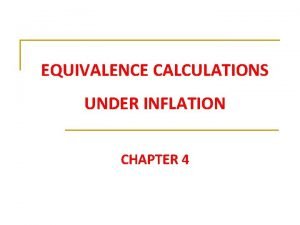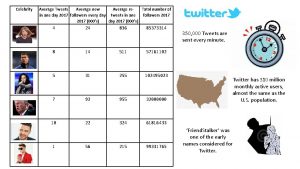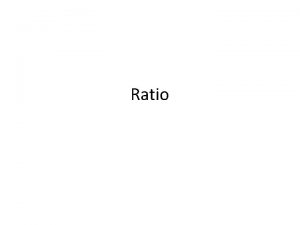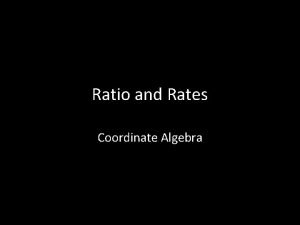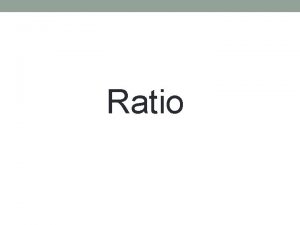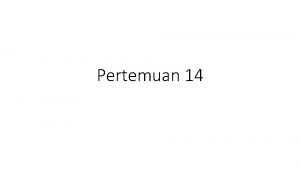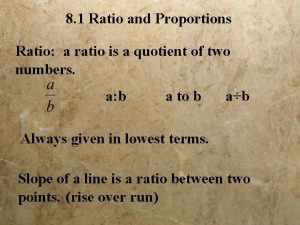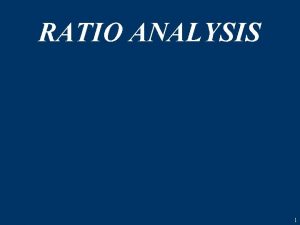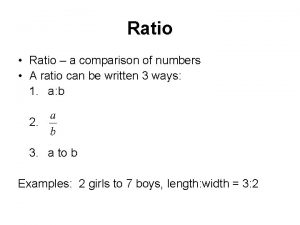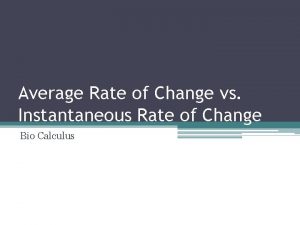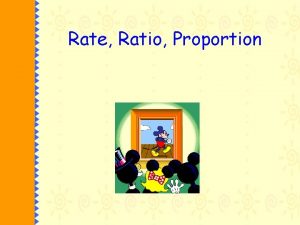Average Rate of Change Rate of Change Ratio















- Slides: 15

Average Rate of Change

Rate of Change • Ratio describing how one quantity changes as another quantity changes • Slope can be used to describe it

Rate of Change • Positive – increases over time • Negative – decreases over time

Rate of Change • Linear functions have a constant rate of change, meaning values increase or decrease at the SAME rate over a period of time

Rate of Change • Horizontal lines have 0 rate of change • Vertical lines have undefined rate of change

Slope Formula

Using the Slope Formula • Find the slope between the two given points: (2, 3) ( 4, -7)

Using the Slope Formula • Find the slope between the two given points: (1, -4) ( 5, -6)

Average Rate of Change using function notation

Ex 3 Find the Average Rate of Change f(x) = -4 x + 10 from [-1, 3]. m = -4

Ex 1 Find the Average Rate of Change f(x) = 2 x 2 – 3 from [2, 4].

Ex 2 Find the Average Rate of Change f(x) = 3 x – 2 from [2, 5].

Ex 4 Find the Average Rate of Change A. Find the rate of change from day 1 to 2. m = 11 B. Find the rate of change from day 2 to 5. Days (x) Amount of Bacteria f(x) 1 19 2 30 3 48 4 76 5 121 6 192

Ex 5 Find the Average Rate of Change In 2008, about 66 million U. S. households had both landline phones & cell phones. Find the rate of change from 2008 – 2011. m = -5 Year (x) Households in Millions f(x) 2008 66 2009 61 2010 56 2011 51 What does this mean? It decreased 5 million households per year from 2008 – 11.

Homework Rate of Change #1, 2 a, b, c, 3, 5, 6 problems
 Second fundamental theorem of calculus
Second fundamental theorem of calculus Instantaneous rate of change calculator
Instantaneous rate of change calculator Average rate of change exponential function
Average rate of change exponential function Average rate of change on a graph
Average rate of change on a graph Diff rule
Diff rule Average rate of change formula
Average rate of change formula Is distance the derivative of velocity
Is distance the derivative of velocity Calculating average rate of change
Calculating average rate of change Motion in a straight line formula
Motion in a straight line formula Financial analysis assessment
Financial analysis assessment Average payment period ratio
Average payment period ratio Accounts payable payment period formula
Accounts payable payment period formula Debt ratio analysis
Debt ratio analysis Capital intensity ratio formula
Capital intensity ratio formula Average collection period formula
Average collection period formula Rate of inflation formula
Rate of inflation formula
